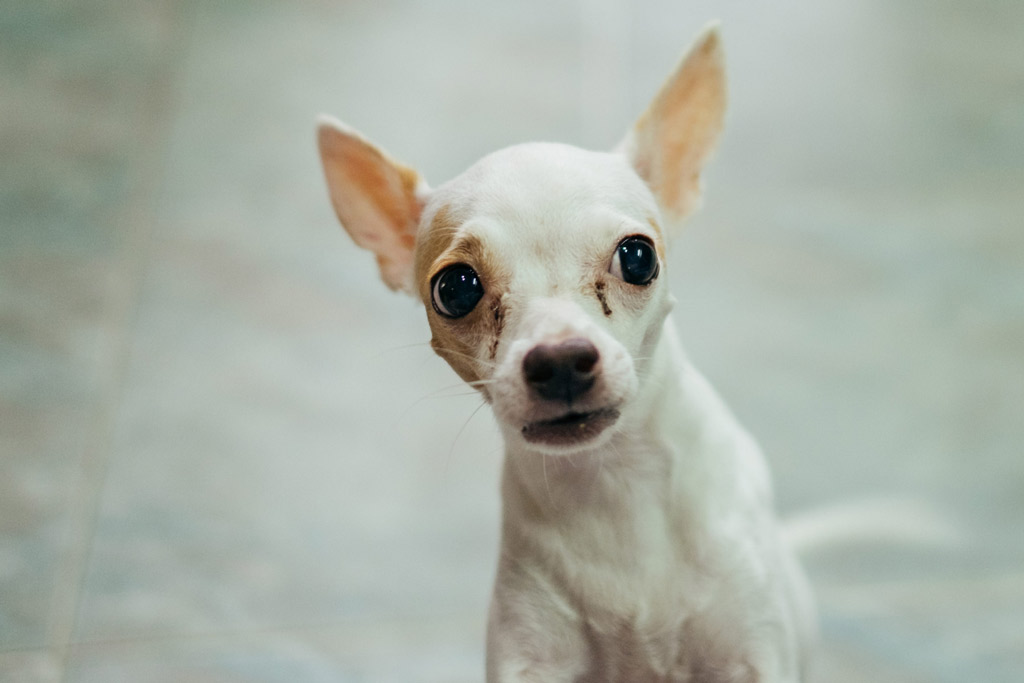
Just like people, dogs also suffer from stress. Maybe you’ve noticed behaviour changes in your dog lately, but you might not be aware that your dog is stressed.
As with many situations, you might find yourself wishing that your dog could speak to you and tell you what’s wrong. Luckily, our dog’s can tell us a lot through body language.
Did you know that there are at least 17 signs that show that your dog might be stressed? Get to know those signs and what to do to help your pooch!
Dog Stress Signs
#1 – Showing the Whites of Their Eyes
Dogs use their eyes to communicate (we all know puppy eyes work wonders!)
Stressed dogs, may have dilated pupils and blink rapidly. They may open their eyes really wide and show more sclera (white) than usual since their eyelids peel back. This behaviour is also called “half-moon eyes” or “whale eyes”.
These give them a startled appearance and also sometimes described as popping out their eyeballs. Sadly, you spot this sign pretty often in stressful shelter environments.
#2 – The Position of Their Ears
Dogs often utilize their ears to express emotions, including stress and anxiety.
An indication of unease or stress is when their ears are usually alert, pinned back or completely flat against their head .
Insider Tip: By learning the usual positions of your dog’s ears, you will notice if their ears are overly perked up (rigid) or pinned down (flat). Either position indicates stress.

#3 – Showing Their Gums
Playful dogs will show teeth, but when their lip curls, it’s a warning of aggression. In response to stress, even whiskers can stand up more pointedly.
Beware when you notice the lip curl before it becomes a snarl, and that snarl can lead to a snap, and a snap to a bite.
Many aggressive signs are accompanied by a fearful body posture and facial expression (even submissive behaviour).
Insider Tip: Watch your dog whilst playing and see if you notice a change between the playful showing of teeth and a more dramatic lip curl – the warning of stress before possible aggressive behaviour.
#4 – Unfocused Barking
Vocalization is a normal canine self-expression, and some breeds are more prone to barking than others.
However, prolonged, unexplained barking can be a sign of stress, particularly separation anxiety. Dogs that are afraid or tense may whine or bark to get your attention, or to self soothe.
Other excess vocalization to watch for:
- Growling.
- Whining.
- Whimpering.
- Excessive panting.
Insider Tip: Although lack of obedience training or boredom can be the cause of too much barking. There’s a difference between unfocused barking and obsessing barking at a particular object or person, for example.
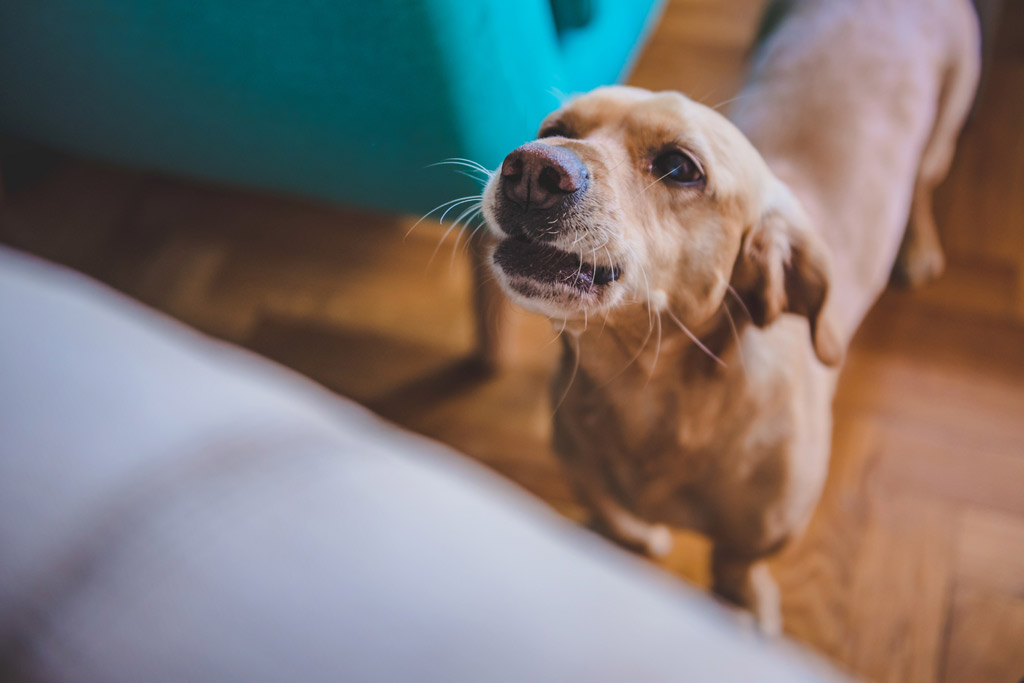
#5 – Gastrointestinal Issues
If your dog’s food intake is inordinately fast – particularly if your dog may have gone hungry in the past – they may have stress around food scarcity.
Accompanied by other signs of stress, gastrointestinal issues like diarrhoea and constipation can be caused by anxiety.
Also, a decrease in appetite might be due to stress or another underlying health condition.
Consult your vet if your dog has gastrointestinal issues or loses appetite in order for you to have an accurate diagnosis of the cause, especially if this persists.
#6 – Tail Between Their Legs
Although this is the sign of stress most dog owners know, not all dogs will use this particular form of body language.
The tail between the legs is the most common position of stress, but it may also be straight down.
Insider Tip: Knowing your dog’s tail position when relaxed and happy will help you realize when something is wrong if your dog’s tail abandons its usual position.
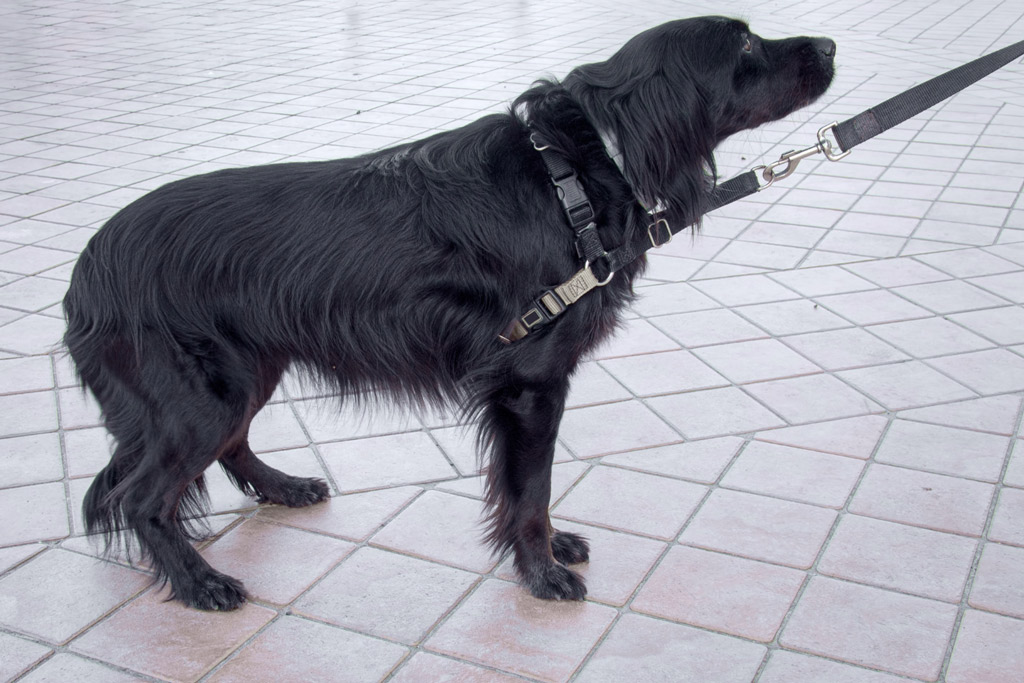
#7 – Licking and Drooling
It turns out that prolonged gazing towards dogs can elicit anxiety in them. The stress reactions include recurring licking of one place; you can tell by a pinkish-brown stain on a dog’s fur.
Another reaction is lip-licking, which is also a sign of submission in a social situation, but it also signals that a dog is uncomfortable or nervous.
Stressed canines tend to produce more saliva than normal and excess drooling is common, and finding puddles of saliva on your floors might be cause for concern.
#8 – Panting, Shaking and Sweating
Dogs pant when hot, excited or stressed, and shiver when they’re cold. But under any other conditions, a trembling body and heavy breathing indicate some level of discomfort.
Similarly to us, dogs placed in a stressed situation will also feel a rise in body temperature, which leads to sweating around their paw pads and nose.
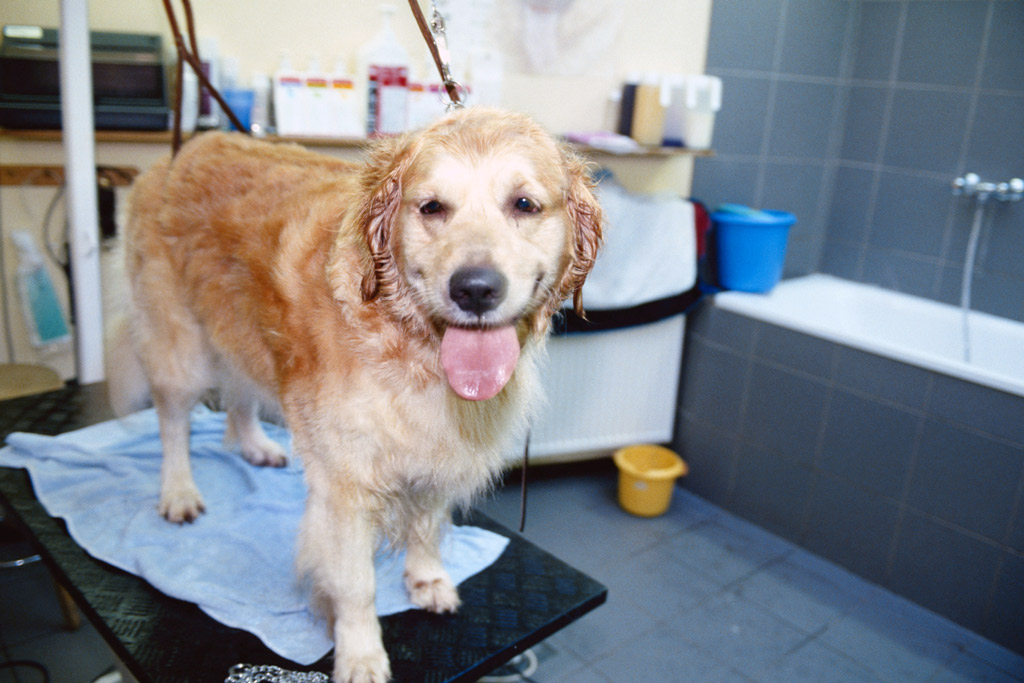
#9 – Excessive Shedding
It can be hard to separate excess shedding from normal shedding, which is why it’s not an instant indication of stress. Since it could also be a sign of an unrelated medical condition, be sure to check with your vet before jumping to any conclusions.
This symptom may also be combined with incessant shaking. For example, your dog could be shaking and also shedding a lot when visiting the vet.
#10 – Avoidance Behaviour
The avoidance behaviour occurs when dogs look for solitude by hiding themselves or looking for isolated places in the house or garden.
A scared or stressed dog will frequently display avoidance behaviours which include:
- Hiding under beds or other furniture.
- Hiding in empty rooms.
- Turning away from their owners.
- Attempting to remove themselves from any situation.
When faced with an unwelcome situation, dogs might try to escape by:
- Focusing on something else.
- Turning or running away.
- Sniffing the ground.
- Lick their genitals.
- Avoid interaction with other dogs or people.
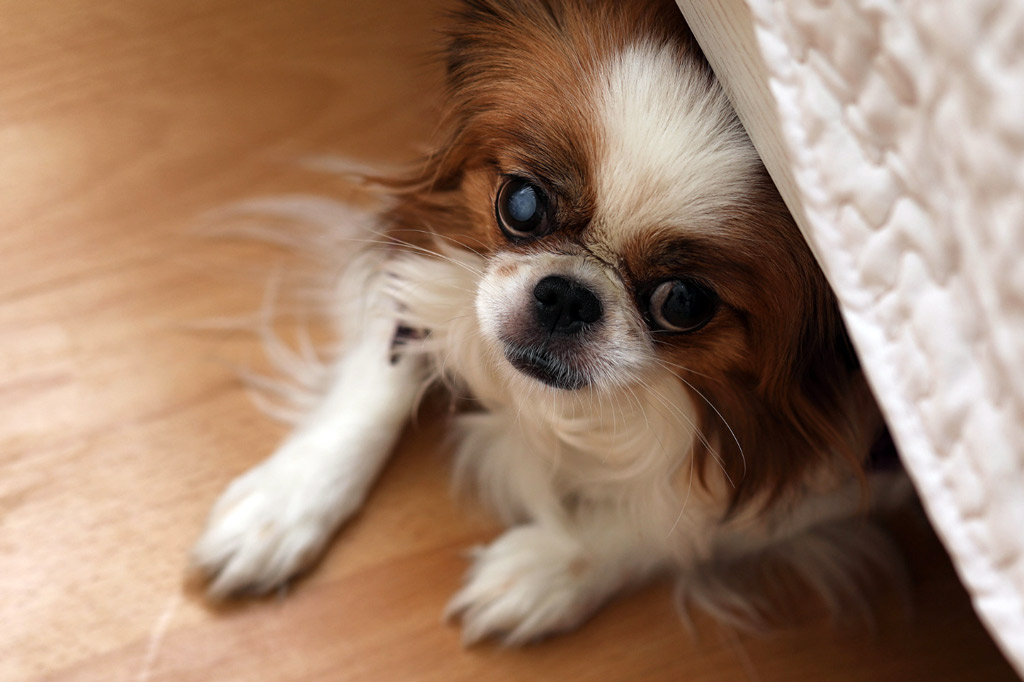
#11 – Pacing or Restlessness
Dogs behave a lot like us when they respond to discomfort and stress, by pacing around, seeming unable to sit still.
#12 – Tense Muscles
Again, just like humans, dogs will stiffen up when they feel tense or stressed.
This reaction might not be immediately obvious from just looking at your dog, and it might be your vet who realises this when examining your dog. e.g. during the check-up your vet might struggle to check your dog’s joints and range of motion because their muscles are so tight.
#13 – Yawning
If a dog repeatedly yawns even after they have slept enough, they’re telling you they’re uncomfortable. For example, you might notice this happening when you are waiting at the vet’s office.
Yawning can often progress to vocalization, such as barking, whimpering, whining or growling.
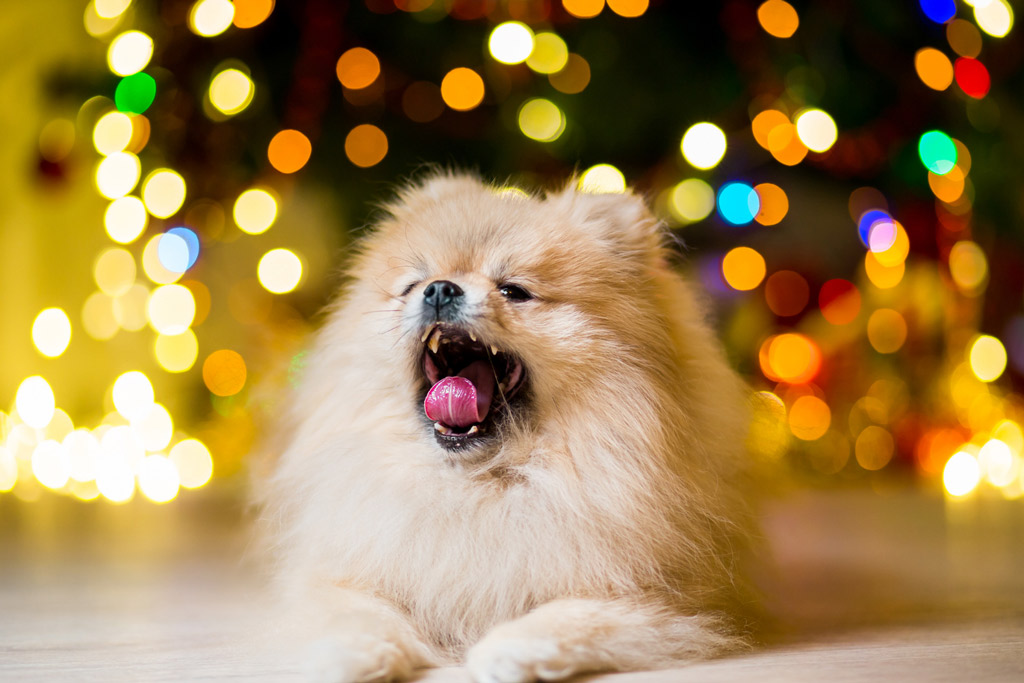
#14 – Scratching
During frustrating, stressful, or even exciting situations, dogs might scratch or bite themselves (especially their paws) even if they’re not itchy.
Like excess shedding, this sign may need a second opinion from your vet just in case it’s something other than anxiety.
#15 – Destructive Behaviour
An anxious or stressed dog will often look for an outlet to alleviate these uncomfortable feelings, and destroying stuff is one of them.
If you come home to shredded pillows, trash on the floor, or door scratches, your dog is suffering from anxiety (and boredom).
Exercise is a great way to fight stress, anxiety and boredom. You can take your dog for a long walk or play brain games for a little while before you leave them alone. Have a look at my favourite dog training method, which includes games that can help you keep your dog physically and mentally stimulated.
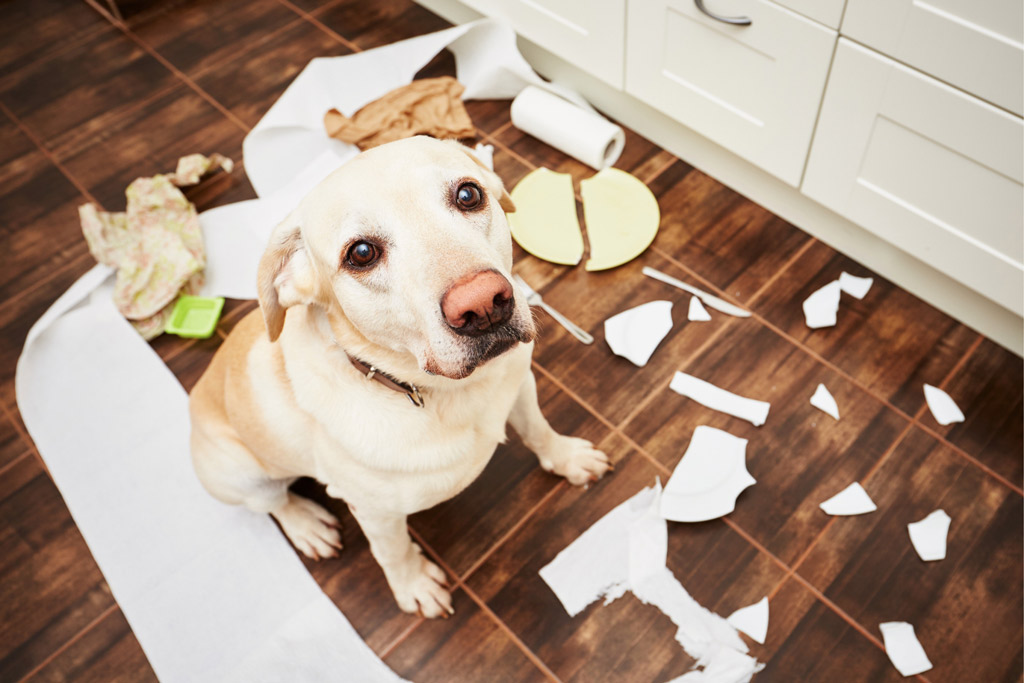
#16 – Hyper-Vigilance
Constantly looking around or becoming alert at the faintest noise or movement is common if dogs don’t feel at ease in their environment.
This is also a common trait for adopted dogs, who may suffer from stress and also have a few fear and anxiety problems. Find out more about this in How to Calm Dog Fears and Anxiety.
#17 – Urinary Accidents
Nervous dogs can feel a sudden urge to go to the bathroom.
Dogs can show that they are nervous or stressed when they urinate or defecate during a veterinary visit, when strangers enter your home, or in the presence of other dogs.
However, urinary accidents can be the cause of several medical issues, such as a urinary tract infection, kidney disease or diabetes. Always check with your vet when in doubt.

Why Dogs Get Stressed
Some causes of stress are obvious e.g. being in the presence of a whole group of excited children is a pretty stressful situation for many dogs.
Here are some common stress triggers for dogs:
- Novelty: Exposure to new items, new people, new animals, etc.
- Boredom: Lack of mental stimulation like playtime, exercise, and training.
- Loud noises: Fireworks, thunderstorms, heavy wind etc.
- Changes in housing: Moving to a new home, boarding, etc.
- Changes in household members: New baby, a new pet, loss of pet or human, house-guests, etc.
- Changes in household routine: New job schedule, walk time change, kids returning to school, holidays, etc. since dogs thrive on routine.
- New people: Guests, children, crowded situations, or strange hands petting them may impact your dog’s nerves significantly.
- Punitive training methods: Shock collars, yelling, hitting, etc.
- Invasion of personal space: Disruption when resting, hugging, kissing, forcibly restraining, etc.
- Lack of outlets for normal breed behaviours: Herding, running, retrieving, etc.
- Separation from human family members: Separation anxiety, etc.
- Poor relationships: Lack of a good relationship with other household members (pets or humans), etc.
- Former trauma: If you adopted a dog with a known traumatic past, more intervention might be required. Traumatic events can be natural disasters, car accidents, neglect, and abuse. They leave behind emotional scars.
- You: Your mood, especially agitation, and actions (refer to Other Stressing Situations) will affect your dog.
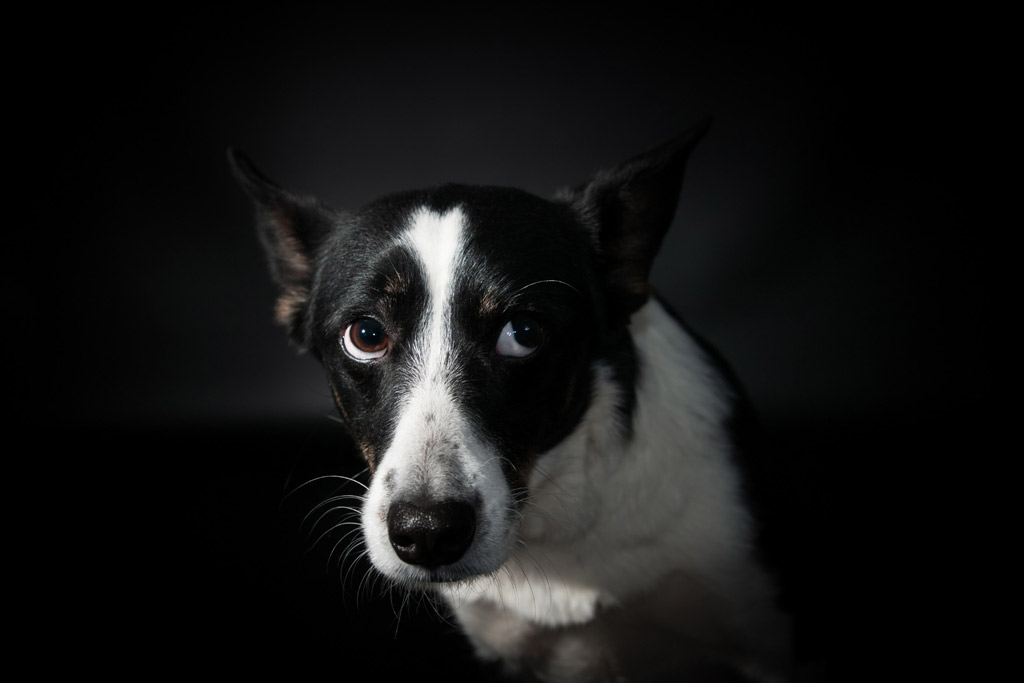
Other Stressing Situations for Dogs
There are many things that can potentially stress out our furry companions… including us.
However, a lot of dog owners don’t realize they are doing things or behaving in ways that create stress for their pooch.
Are you contributing to your dog’s anxiety and behaviour issues?
The veterinary publication dvm360 has compiled a list of stress triggers for dogs:
#1 – Punishing for Behaving Like a Dog
Dogs are opportunistic creatures, so you should avoid creating opportunities for trouble. Basically, ensure the only opportunities you provide your dog are ones she can succeed at.
For example:
- Don’t leave food or scraps where she can smell or see them.
- Don’t leave her in the bedroom alone with your slippers or socks at reach.
#2 – Keep Telling “No”
If your dog is doing something she shouldn’t be doing, telling her “no” will probably cause her to stop the behaviour temporarily.
But saying no to a dog without offering an alternative turns your “no” into merely an interruption, not a request or demand.
#3 – Giving a Variety of Verbal Commands for a Single Behaviour
Animals communicate using body language and are very good at figuring us out.
Unless you have specifically taught your dog to “drop it,” “leave it,” “get it,” and “come,” just to name a few, then your dog may not actually “know” these terms.
Therefore, using them repeatedly will result in stress as your dog attempts to guess the right answer.
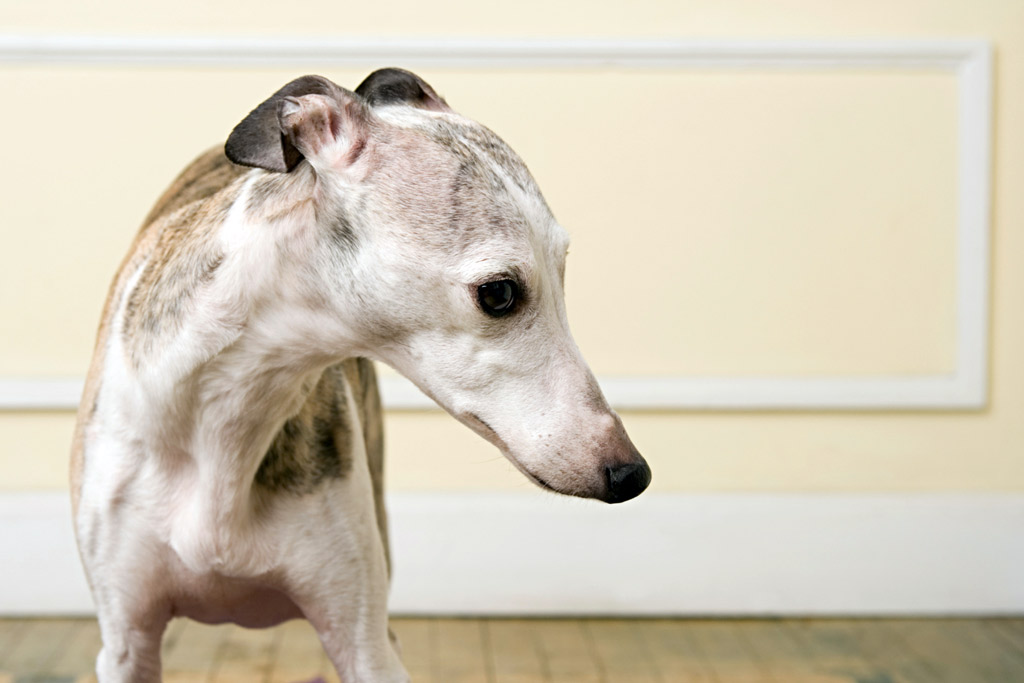
#4 – Telling “It’s Okay” When It’s Not
Many dog owners tend to say this phrase to their dog when something decidedly not okay is about to happen. For instance, when you’re driving your dog to the groomer, which is a place she’s not fond of.
If you use “it’s okay” every time you take her there, in an effort to comfort her, it becomes a verbal cue to panic. Because the second you utter those words she knows without a doubt where she’s going, and her stress level shoots through the roof.
#5 – Pulling On The Leash
A dog that has been properly trained to walk on a leash doesn’t typically do a lot of pulling.
But pulling on the lead increases everyone’s frustration and stress. We owe it to our dogs to teach them, without punishment, that a loose lead is a wonderful thing.
#6 – Holding While You Hug or Kiss
Canines really don’t get these human expressions of affection and can be confused by them. In other words, dogs generally do not like to be hugged and kissed, especially by strangers. Also, since dogs are typically being held (restrained) during the bear hug, it increases their stress level.
Just imagine how you would feel if a big stranger grabbed you and wouldn’t let go. It’s not a nice feeling and does nothing to generate trust, right?
So unless your dog is remaining contentedly still on his own while being hugged or kissed, it’s best to stick to stroking and petting, which most dogs can’t get enough of.
In Understanding Your Dog’s Body Language for Affection, you can find out more about the many ways your dog shows you love.
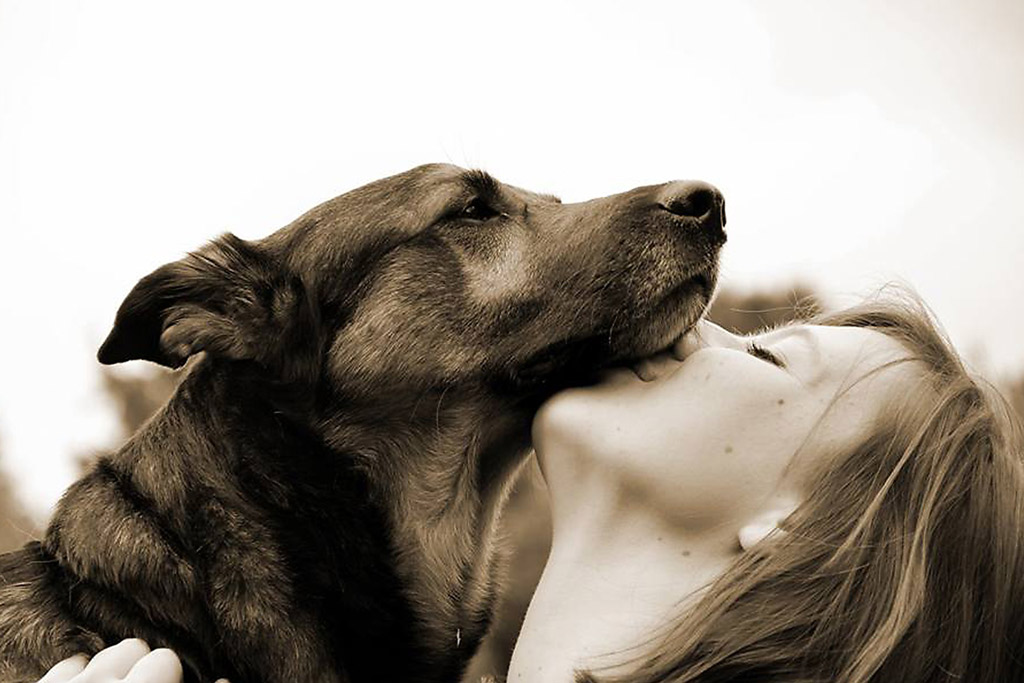
#7 – Staring At Them
Most people are uncomfortable being stared at by other people, so it’s easy to imagine how unsettling it might be for your dog.
Also, direct prolonged eye contact with dogs is very confrontational. In canine body language, it suggests confrontation.
#8 – Pointing or Shaking Your Finger at Them
The finger-pointing or shaking thing is a universal stress inducer for dogs, and many humans too. That’s probably because it’s usually done while you’re also leaning over your dog, or speaking in a tone of voice that signals your displeasure.
As a consequence, the “guilty look” is the result of the finger-pointing thing, but your pooch isn’t so much feeling guilty as uncomfortable, wary, confused, and yes… stressed.
#9 – Commanding “Get Down” When Jumping Up
This is the same case scenario as #3. If you use the verbal cue “down” to ask your dog to go sit or lie-down, it won’t work to indicate to her to stop jumping.
Instead, train her to stop jumping with the verbal command “off” or “paws on the floor” and teach the dog what the word means. Remember that the name of the cue is irrelevant.
#10 – Waking Them Up
Unless there’s a pressing reason to awaken your four-legged family member from a nice snooze, try to avoid it.
Sleep disruption can cause stress in dogs. Being shaken or shouted awake is stressful for all of us.
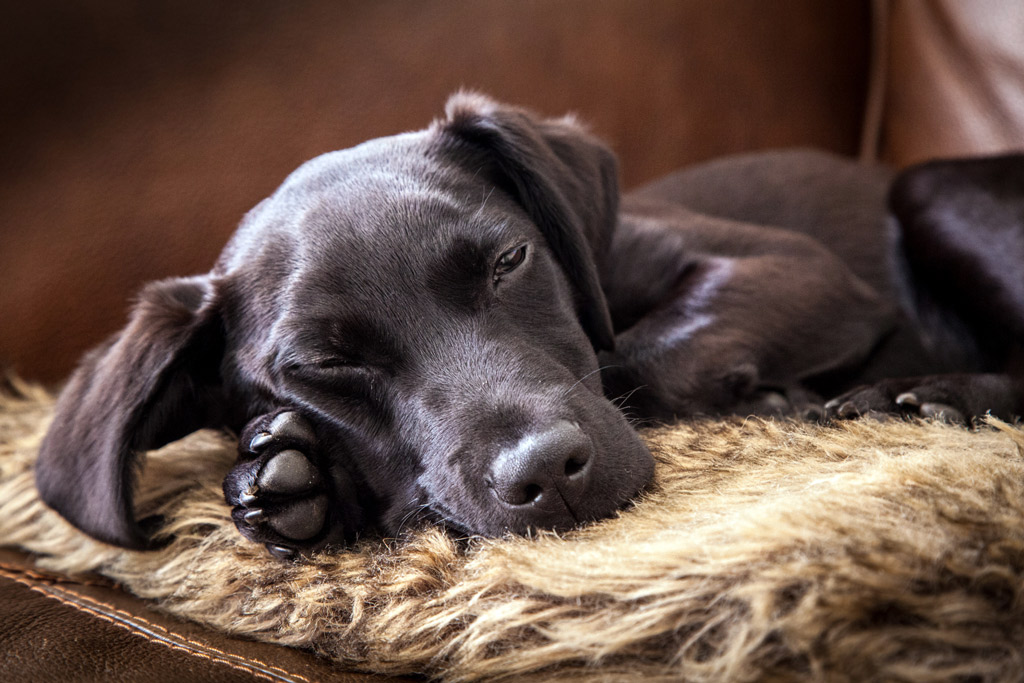
How to Help a Stressed Out Dog
While some things that cause your dog stress are outside your control, there are many things you can do to reduce stressors in your dog’s environment by clearly communicating with your pooch.
If your dog’s behaviour changes suddenly in any way, schedule an appointment with your veterinarian to rule out any underlying medical issues first.
After that, you can address the possible stress triggers for your dog. It may help to make a list of everything your dog finds stressful, so you can tackle each issue slowly and sensitively.
Here are some tips for helping to alleviate stress and anxiety in your dog:
#1 – Exercise Your Dog Daily to Release Tension
Walking your dog is a great form of exercise. Dogs need daily exercise to stay in shape.
Beyond potty break walks, your dog needs longer walks. Dog walks keep her mentally and physically healthy. Without enough exercise to stimulate their mind and body, some dogs become anxious or destructive.
How often you walk your dog depends on your dog’s breed, age, and energy levels.
On average, a minimum of 20-30 minutes a day for adult dogs. Bigger and more active dogs can easily double that amount. Puppies, on the other hand, shouldn’t walk more than 30min in total a day.
#2 – Play with Your Dog Every Day to Avoid Boredom
Playing games with your dog also stimulate her mentally and physically, preventing her from getting bored.
Games of fetch, problem-solving toys and brain games can help activate the thinking brain in stressful situations, which in turn deactivates the emotional brain and allows the dog to concentrate on something more positive than the negative emotion.
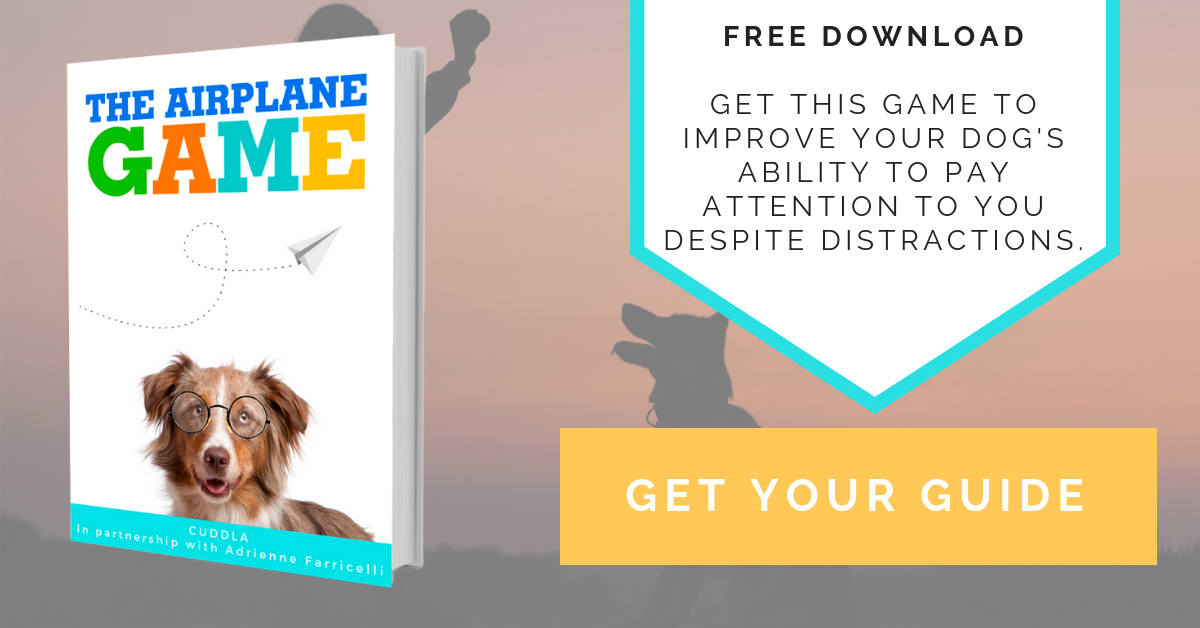
You can check my favourite dog training method, which includes games so you can keep your dog physically and mentally stimulated.
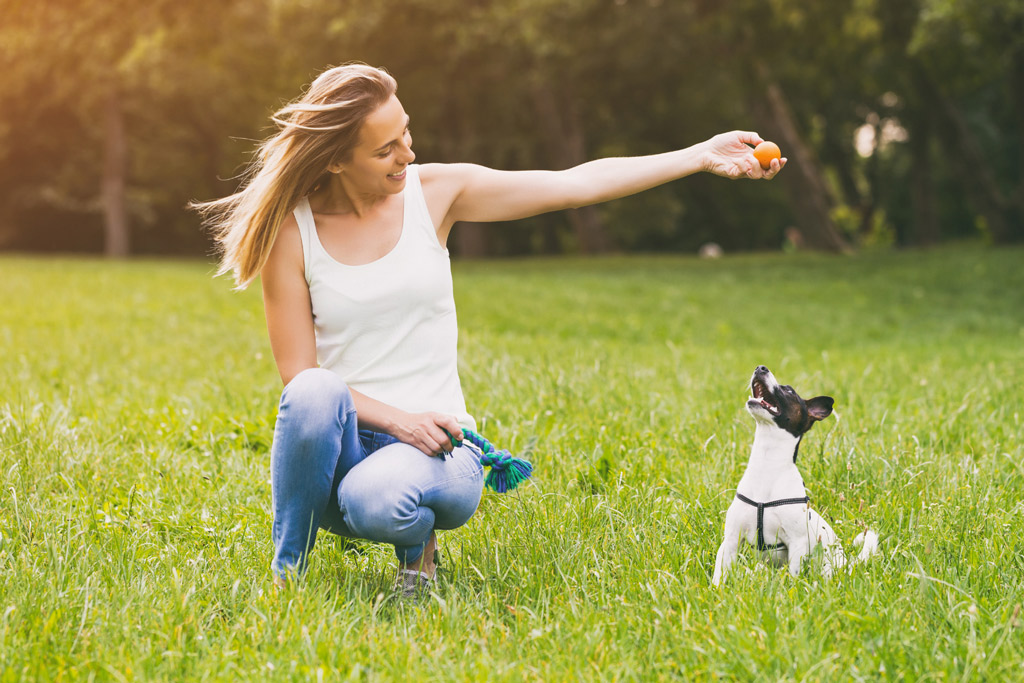
#3 – Use Desensitization to Face Stress Triggers
Desensitisation means gradually exposing your anxious dog to the thing they’re scared of.
You can help your dog to build up her confidence and trust in you whilst also minimizing stress by:
- Practising desensitization to overcome dog stress, fears and anxiety. (For more, check out How to Calm Dog Fears and Anxiety).
- Using counter-conditioning techniques.
- Managing a dog’s exposure to stressors.
- Following a reward-based training to phrase her positive behaviours. (For more, check out Dog training 101).
- Minimizing potential stressors at home.
- Managing your own emotions since dogs are very good at picking up on a person’s emotional state.
#4 – Try Lavender to Relax Your Dog
The lavender essential oil has also been proven to reduce a dog’s stress response.
You can place two drops on your dog’s collar or bedding before a stressor occurs. Otherwise, you can use a diffuser around your house for an overall calming effect.
Alternatively, Adaptil (Amazon link) it’s a well-known diffuser to curb stress-related unwanted behaviours. The diffuser emits an odourless pheromone that provides a strong signal of comfort and security to dogs.
#5 – Get a Massage Method to Release Anxiety
Massaging your dog and talking softly can help. You can give your dog a home massage by rubbing her belly gently.
If your dog seems to respond well to pressure applied to her body, there are wraps available like Thundershirt anxiety jacket (Amazon link) that can be very helpful.
For example, Tellington TTouch (also known simply as TTouch) is a specific massage technique that can help anxious pets. It is a gentle, positive method for training and healing companion animals and has the power to reshape a dog’s behaviour through kindness and understanding.
Check out the book Getting in TTouch with your Dog: A Gentle Approach to Influencing Behaviour, Health and Performance (Amazon link) to learn more about this massage technique.
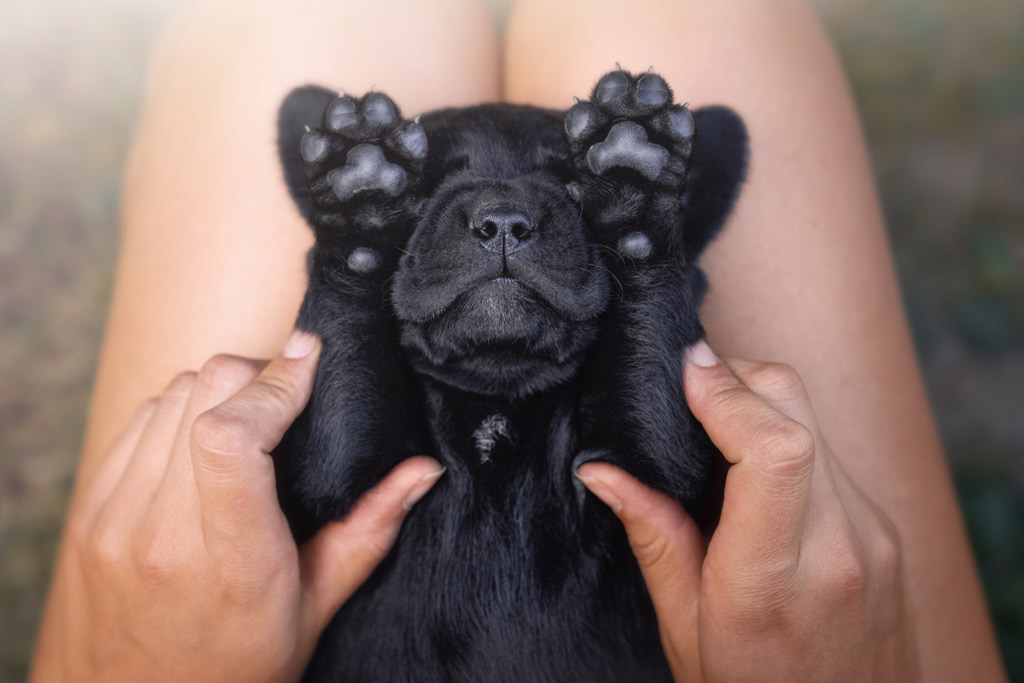
#6 – Play Soothing Sounds
You can play calm, soothing music or white noise sounds (Amazon links) before a possible stressor occurs. This may relax your dog and have the added bonus of drowning out distressing noises.
Also, you can leave the radio or some music on when you leave your dog at home.
For busy households, you can even record your family going about their usual daily home life and play it back to your pooch. This way, your dog will likely note less the imminent silence when the house is empty.
#7 – Create a Safe Zone
Having a “dog safe space” or a den for your dog with a blanket and toys helps, especially if it’s located in a quiet place of the house.
This area is great for your dog to escape high-stress events like thunderstorms and parties. If possible, stay with her until the high-stress event has passed. Your presence is a great reassurance to her.
#8 – Choose a Balanced Diet
Your dog’s diet is an integral part of her health and wellbeing. That’s why it’s important to prepare a balanced meal. Choose a high-quality dog food that is species-appropriate.
Providing your dog with a diet that is not properly balanced for her life stage and lifestyle may cause unforeseen repercussions that may lead to anxiety and stress.
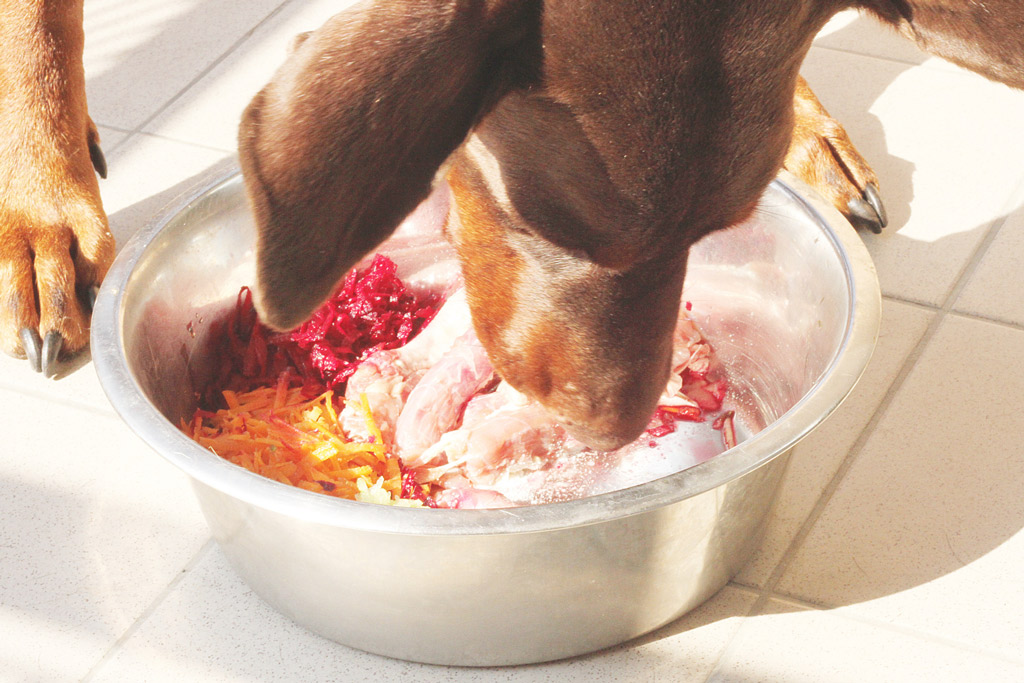
#9 – Promote Independence
You can promote your dog’s independence by discouraging her neediness. This will reduce your pooch’s stress in the long term.
Here are some suggestions to achieve this:
- Put a food toy such as a Kong by your feet while you are watching TV or reading on the sofa. Gradually place it further away from you over the space of a few weeks. This will teach your dog to settle down and engage in activities without you. During this time you should still go in and out of the room as normal.
- Install a baby gate in the house to keep your dog away from certain areas of the house. You can also maintain some dog’s closed, like the bedrooms and bathrooms. This way, you can move from room to room without your dog always being able to follow you. This will train your dog to remain calm when you are not nearby.
- Give your dog reassuring attention before you leave the house to reduce separation anxiety. You can find out what you can do to keep your dog calm when leaving your dog at home in our How to Calm Dog Fears and Anxiety blog post.
Finally, for more about dog care, check out The 5 pillars to a happy and healthy dog blog post.
